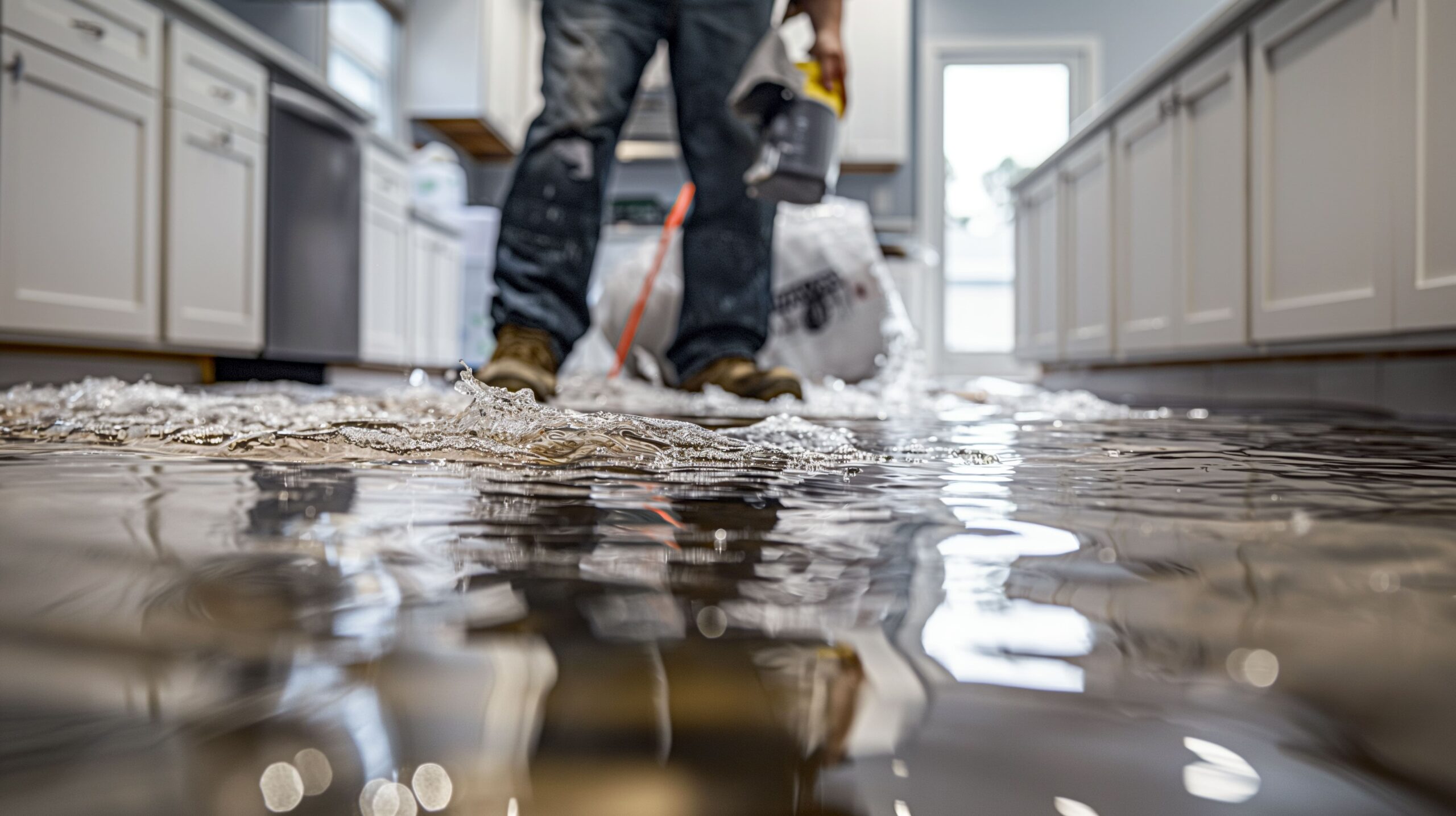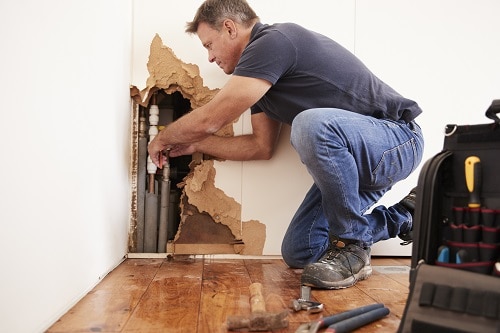Water Damage Restoration 101: Understanding the Process and Price
Water damage can strike suddenly, leaving homeowners in a state of complication. Understanding the reconstruction process is important for reliable recuperation. From assessing the damage to picking the best solution company, each action impacts the general outcome and expense. Variables such as the kind of water damage and necessity likewise play a significant duty. What are the certain strategies used in repair, and how can one get ready for possible costs?
Kinds Of Water Damage

Initial Evaluation and Examination

Water Extraction Strategies
Following the initial analysis, effective water removal methods are used to alleviate damage and avoid more problems. These strategies include using specialized tools such as submersible pumps and industrial-grade vacuums - Water Damage Restoration. The option of method relies on the quantity of water present and the kind of materials affected. For standing water, completely submersible pumps are commonly used for rapid elimination, while vacuum cleaners are excellent for extracting water from carpetings and upholstery. Additionally, progressed methods like water removal mats might be used for hard-to-reach areas - Water Damage Restoration. The objective is to eliminate as much water as feasible, reducing the potential for mold and mildew growth and architectural damage. Trigger and reliable water extraction is important in the total water damage remediation process
Drying and Dehumidification Process
When the water extraction is total, the drying out and dehumidification process comes to be important to recovering the damaged area. This stage usually utilizes industrial-grade dehumidifiers and air movers to properly decrease wetness levels. The dehumidifiers reel in moist air, removing excess humidity, while air moving companies circulate air to speed up dissipation. Monitoring tools is usually utilized to track humidity and temperature degrees, guaranteeing ideal drying conditions. The duration of this procedure can differ depending on the level of the water damage and ecological aspects. It is necessary to extensively completely dry all impacted materials, consisting of walls, flooring, and home furnishings, to protect against mold and mildew growth and structural damage. Correct execution of this step is essential for a successful remediation result.
Cleansing and Disinfecting Damaged Locations
As soon as the drying out process is total, a detailed first assessment and evaluation of impacted areas is crucial to determine contamination levels. Effective cleansing techniques and proper products must then be used to get rid of debris and stains. Sanitization and disinfection approaches are necessary to ensure that hazardous microorganisms are gotten rid of, restoring the room to a safe condition.
Preliminary Assessment and Inspection
Prior to beginning any type of reconstruction efforts, a detailed first evaluation and evaluation of the affected locations are vital for efficient cleaning and sterilizing. This procedure entails recognizing the level of water damage, determining the source of the water breach, and evaluating the materials impacted. Examiners generally seek indicators of mold growth, architectural integrity problems, and damaged valuables. The analysis also consists of examining wetness degrees making use of specialized tools to assure no concealed water pockets stay, as these can result in further difficulties. Recording the findings is important for intending the next action in the remediation process. An in-depth preliminary assessment enables restoration specialists to design a targeted strategy for effective cleaning and sanitizing, eventually lessening damage and wellness dangers.
Cleansing Strategies and Products
Reliable cleaning and sterilizing of water-damaged areas require a range of items and strategies customized to the details products impacted. For permeable surface areas like drywall and carpets, extraction techniques are necessary to get rid of excess wetness, complied with by deep cleansing with specialized detergents. Non-porous products such as ceramic tile or metal can be cleaned using commercial-grade cleaners that effectively eliminate contaminants. Heavy steam cleaning is an additional effective technique, especially for carpets and upholstery, as it makes use of heats to get rid of microorganisms and mold (Flood Cleanup Services). Additionally, green products are increasingly prominent for their safety and efficiency - Water Damage Restoration. Inevitably, picking the suitable cleansing approaches and products not just guarantees prompt sanitation yet additionally help in protecting against further damage and health dangers connected with water invasion
Sanitization and Disinfection Techniques
When addressing water damage, correct sanitization and disinfection approaches are crucial to guarantee the security and wellness of the affected atmosphere. After first cleansing, surfaces must be treated with proper disinfectants to remove pathogens, mold and mildew, and microorganisms that flourish in moist problems. Usual approaches include using EPA-approved chemical anti-bacterials, which can be used via splashing or wiping methods. Additionally, ultraviolet (UV) light systems can effectively sanitize areas by reducing the effects of microorganisms without extreme chemicals. The selection of approach often depends upon the sort of materials affected and the level of contamination. Eventually, thorough sanitization not only restores a safe living space but additionally helps prevent future health risks connected with sticking around moisture and mold and mildew development.

Repair Work and Restoration Options
Examining the damage caused by water exposure is crucial for establishing the appropriate repair work and restoration options. Property owners may encounter various problems, consisting of harmed drywall, distorted floor covering, and endangered structural components. Depending upon the level of the damage, repair work might entail changing areas of drywall, mounting brand-new floor covering, or strengthening structural beams. In instances of serious damage, total replacement of afflicted materials may be needed. Additionally, expert conservators typically advise using dampness meters to examine covert moisture degrees before picking the best training course of activity. It is very important to act promptly to stop mold and mildew development and additional degeneration. Selecting the right alternatives not just brings back the building yet likewise guarantees long-term safety and security and capability.
Aspects Influencing Restoration Expenses

The level of water damage directly affects the reconstruction sets you back property owners can expect to sustain. Aspects such as the resource of the water, the duration of direct exposure, and the affected materials substantially influence prices. For circumstances, tidy water damage from a damaged pipeline is typically less expensive to recover compared to damage triggered by sewer. Additionally, the level of contamination check out here determines the need for specialized cleansing and disposal solutions, further enhancing costs. Geographical area additionally contributes, as regional labor rates and accessibility of repair solutions can differ. The necessity of the feedback influences prices; quicker interventions usually lead to reduce general costs by stopping additional damage. Understanding these elements is vital for homeowners when approximating reconstruction prices.
The 3 main types of water damage are categorized based on contamination degrees: tidy water, grey water, and black water. A thorough first analysis and assessment are important steps in the water damage restoration process. For standing water, submersible pumps are commonly used for fast removal, while vacuum cleaners are optimal for extracting water from carpetings and furniture. The extent of water damage straight affects the reconstruction costs homeowners can anticipate to incur. Tidy water damage from a damaged pipe is generally much less expensive to restore contrasted to damage triggered by sewage.